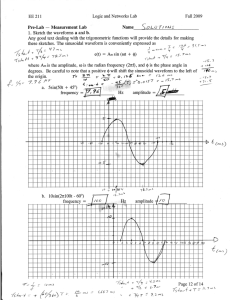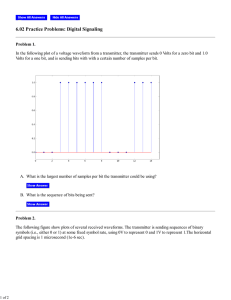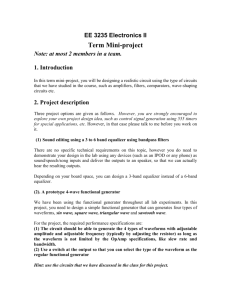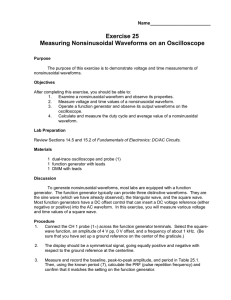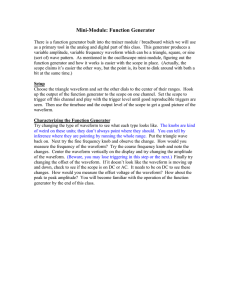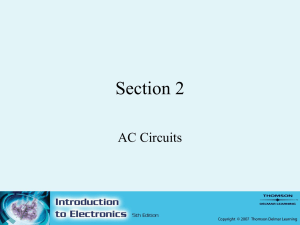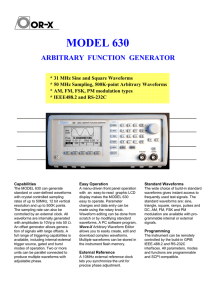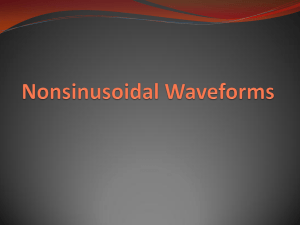Massachusetts Institute of Technology
advertisement
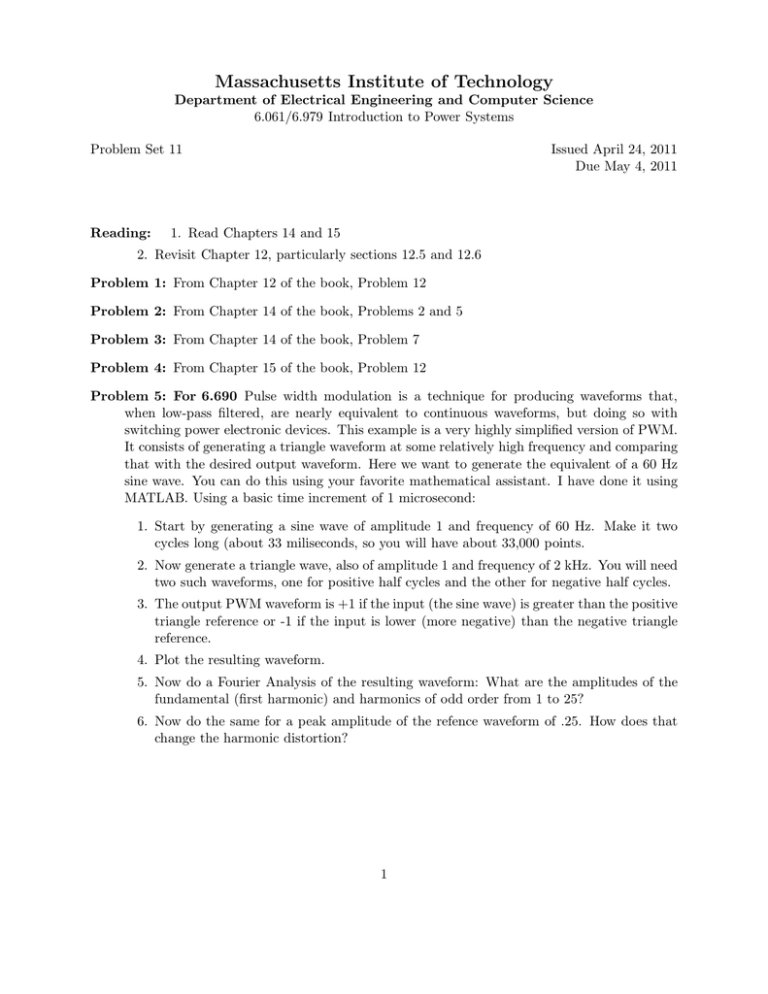
Massachusetts Institute of Technology Department of Electrical Engineering and Computer Science 6.061/6.979 Introduction to Power Systems Problem Set 11 Reading: Issued April 24, 2011 Due May 4, 2011 1. Read Chapters 14 and 15 2. Revisit Chapter 12, particularly sections 12.5 and 12.6 Problem 1: From Chapter 12 of the book, Problem 12 Problem 2: From Chapter 14 of the book, Problems 2 and 5 Problem 3: From Chapter 14 of the book, Problem 7 Problem 4: From Chapter 15 of the book, Problem 12 Problem 5: For 6.690 Pulse width modulation is a technique for producing waveforms that, when low-pass filtered, are nearly equivalent to continuous waveforms, but doing so with switching power electronic devices. This example is a very highly simplified version of PWM. It consists of generating a triangle waveform at some relatively high frequency and comparing that with the desired output waveform. Here we want to generate the equivalent of a 60 Hz sine wave. You can do this using your favorite mathematical assistant. I have done it using MATLAB. Using a basic time increment of 1 microsecond: 1. Start by generating a sine wave of amplitude 1 and frequency of 60 Hz. Make it two cycles long (about 33 miliseconds, so you will have about 33,000 points. 2. Now generate a triangle wave, also of amplitude 1 and frequency of 2 kHz. You will need two such waveforms, one for positive half cycles and the other for negative half cycles. 3. The output PWM waveform is +1 if the input (the sine wave) is greater than the positive triangle reference or -1 if the input is lower (more negative) than the negative triangle reference. 4. Plot the resulting waveform. 5. Now do a Fourier Analysis of the resulting waveform: What are the amplitudes of the fundamental (first harmonic) and harmonics of odd order from 1 to 25? 6. Now do the same for a peak amplitude of the refence waveform of .25. How does that change the harmonic distortion? 1 MIT OpenCourseWare http://ocw.mit.edu 6.061 / 6.690 Introduction to Electric Power Systems Spring 2011 For information about citing these materials or our Terms of Use, visit: http://ocw.mit.edu/terms.
